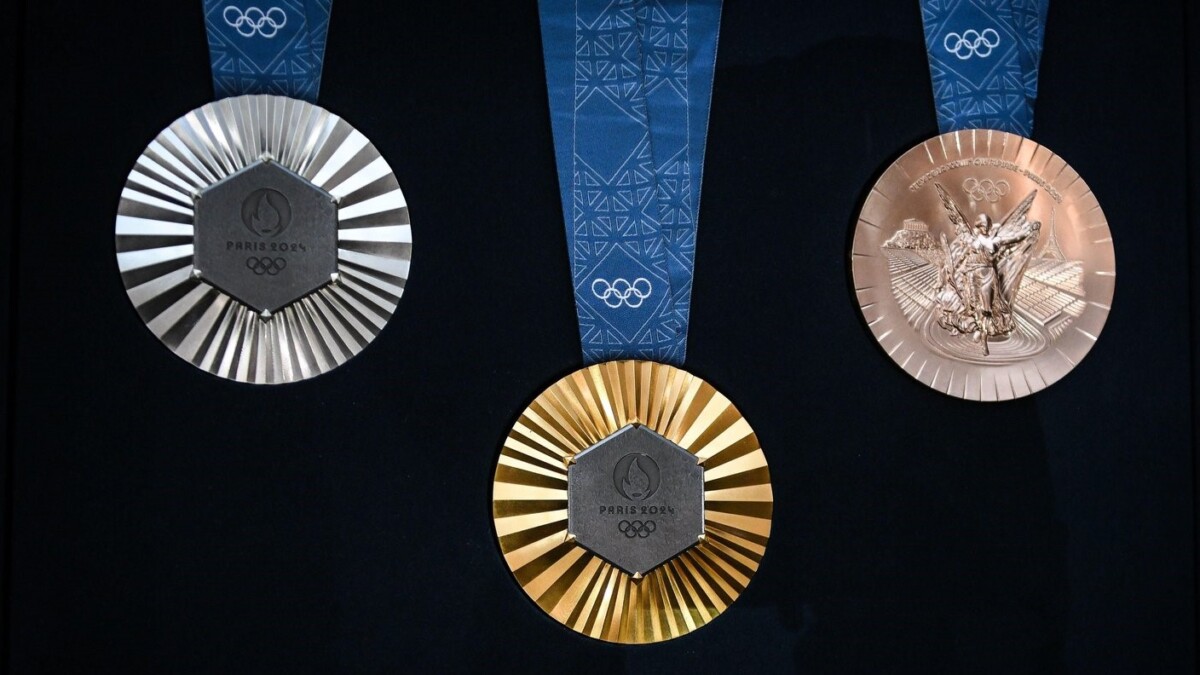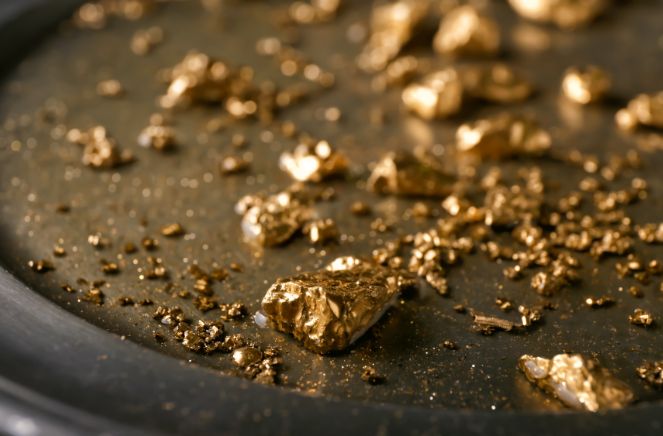The Paris 2024 Olympic Medals: Gold, Silver, Bronze…and Iron?

The Paris Olympics are kicking off this week, and we’re hyped to see the best athletes in the world compete after four long years of dedication and training. Central to this experience are the 2024 Olympic medals that will be presented to the first, second, and third place winners of every Olympic event. Symbolizing strength, excellence and the spirit of competition for more than a century, this year’s gold, silver and bronze medals also represent the host city of Paris in an iconic, historic, and sustainable way.
The Metal Makeup of Olympic Medals

Beginning with the Athens 1896 Olympics, the medals for almost all of the summer Olympic games have featured the image of Nike, the Greek goddess of victory, on one side. The other side is left up to the host city organizing committee to design, with final approval coming from the IOC (International Olympic Committee). As a precious metal refiner, we wondered about the actual metal content and value of the 2024 Olympic medals. We learned that the IOC sets the following guidelines for the materials to be used for the medals:
- The Gold (first place) medal is composed of at least 92.5% of silver, plated with 6 grams of gold. According to Wikipedia, the gold medal from the 2020 Summer Olympics was worth close to $800 at the time. (Because metal prices fluctuate, so does the intrinsic value of the Olympic medals.)
- The Silver (second place) medal is composed of 92.5% silver. The value at the most recent Olympic games was $460.
- The Bronze (third place) medal is made up of 97% copper with 0.5% tin and 2.5% zinc. At the 2020 games, it had a metal value of about $5.
Of course, the true value of an Olympic medal lies not in its precious metal content, but in the value of the athlete’s accomplishment in competing against the world’s best and winning it! But there’s one more metal being incorporated into the Paris medals, and it’s making this year’s version of the medals a truly unique and priceless memento of the 2024 games.
A Piece of Paris in Every 2024 Olympic Medal

For the design of the 2024 Olympic medals, the Paris organizing committee has done something that will make them unmatched in the history of Olympic medal design. They’ve incorporated a piece of the city’s most iconic landmark – iron from the Eiffel Tower – into each and every 2024 Olympic medal.
During the 20th century, the structure of the Eiffel Tower underwent renovation work which involved the removal of some metallic elements. These pieces of French history have been carefully preserved, and now they will be a part of Olympic history as well. On each medal for the Paris 2024 Olympics, original iron from the Eiffel Tower has been cut into a hexagon embossed with the Paris 2024 logo. According to the Olympic committee, “this piece of heritage blends elegantly with the gold, silver and bronze” creating a treasured keepsake for every winner who takes one of these coveted medals back home with them at the end of the Olympic games.
Parisian Creativity and Craftsmanship

Combining the iron of the Eiffel Tower with the gold, silver and bronze of the Olympic metals required the skill and creativity of a master jeweler. Selected for this prestigious task was the House of Chaumet, a renowned Parisian jeweler with a 240-year tradition of fine jewelry creation. The design incorporates three key motifs, the hexagon shape of the iron Eiffel Tower fragments, the “radiance” of fine-lined rays of embossed metal beneath the iron, and the “claw” setting connecting these two elements at the six corners of the iron hexagon. The settings are in the “Clous de Paris” shape reminiscent of the famous rivets on the Eiffel Tower.
The manufacturing process for the medals is more complex than the process for that of a coin. Metal blanks cut into discs were sent to the Hôtel de la Monnaie (French Mint) workshop on the left bank of the Seine River. These discs were then struck several times in a press equipped with specialized tools to bring out the design created by the Paris 2024 Committee and The House of Chaumet. The medals then underwent a series of specialized processes to remove impurities, polish and finalize the design, and create the gap through which the ribbons of the medals are threaded.
Sustainability Meets Sportsmanship

In line with Paris 2024’s commitment to sustainability, the 2024 Olympic medals were crafted using recycled materials. Per the IOC’s standards, the gold and silver metals are made from solid silver with a millesimal fineness of 925. Both the gold and silver used are certified 100% recycled by the Responsible Jewellery Council (RJC), one of the main regulatory bodies overseeing good practice in the supply of gold and other precious metals. For the bronze medals, the copper alloy, tin and zinc used come from reused scraps of metal that are a byproduct of other production processes of the Monnaie de Paris.
With their iconic design and sustainable materials, the 2024 Olympic medals promise to be an inspiring and lasting testament to the spirit of competition and the “thrill of victory” of the Olympic games. We can’t wait to cheer on the U.S. team as they travel to Paris to compete (especially the many athletes from right here in our home state of Indiana)!
To learn more about how refining and recycling your scrap metal helps to advance sustainable use of our global resources, check out our blog article, How Precious Metal Recycling Helps Save the Planet.
GET CASH FOR YOUR GOLD, SILVER, AND OTHER PRECIOUS METAL SCRAP
Click Here to order FREE collection containers and shipping labels for your scrap materials, and begin recycling with Noble Metal Refining today.
